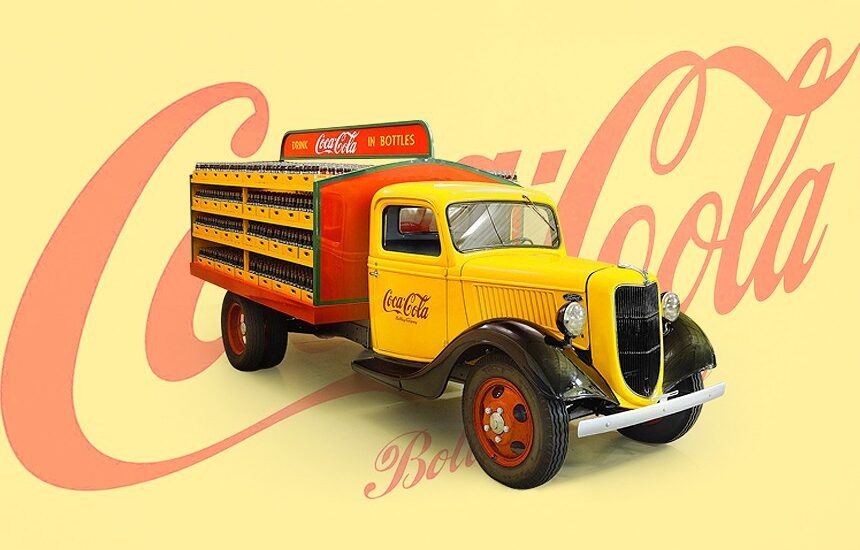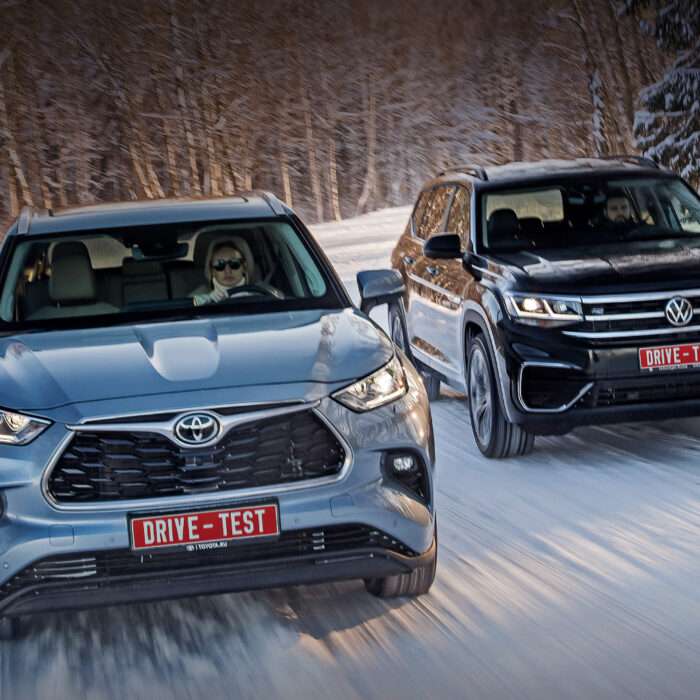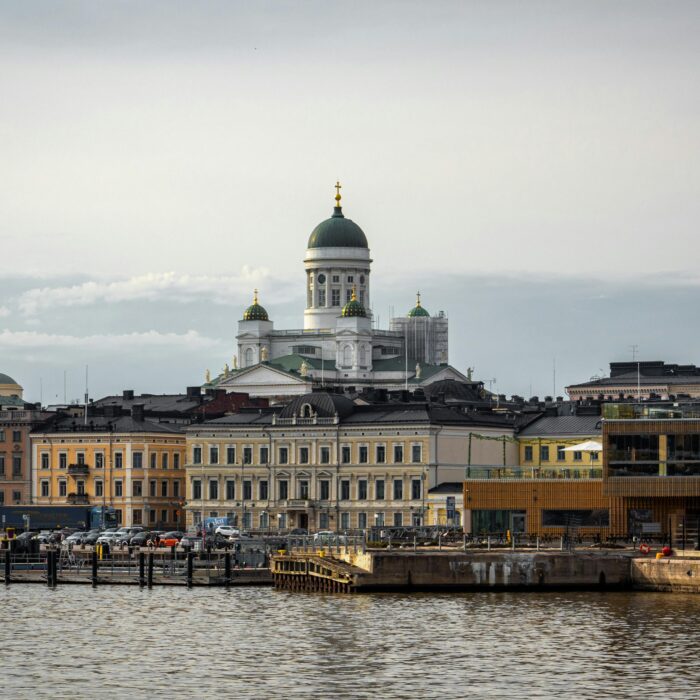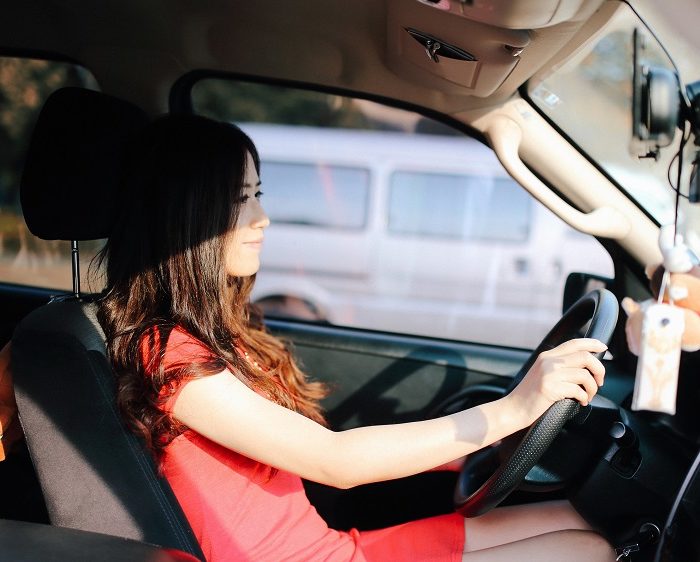Today, Santa arrives in a brightly painted red truck, towed by an equally striking red Freightliner tractor. However, historical illustrations reveal a time when different colors and different vehicles were in vogue for festive occasions.
The specific holiday in question dictates the choice of color and decoration. While the color red is synonymous with Christmas, thanks to Coca-Cola’s long-standing advertising campaigns, the truck featured here was dressed up for a completely different event. In 1936, the renowned soda company celebrated its fiftieth anniversary, and for this special occasion, Ford Motor Company provided a batch of “anniversary” vehicles adorned in a unique livery.


The presence of a V8 engine under the hood was emphasized in every possible way by the brand’s symbols – at that time, not every American truck could boast such an engine.
Automobiles were swiftly adopted for commercial use by Coca-Cola as soon as their practicality was established. Yet, advertising on these vehicles was applied sparingly: aside from the striking logo and the address of the affiliated auto company, the delivery trucks were otherwise unadorned. In contrast, other businessmen went to great lengths for attention—another beverage supplier under the Moxie brand even mounted a life-sized wooden horse atop a vehicle chassis and paraded this “Trojan wonder” through towns and villages. (From today’s perspective, the efficacy of such efforts is questionable—has anyone even tasted “Moxie drink”? Exactly!) The creativity of mobile advertising knew no bounds, with vehicle bodies shaped like fashionable shoes, milk bottles, or even magnified spark plugs and Zippo lighters. Coca-Cola, however, initially adopted a more conservative approach, relying on the strong recognition of its logo.



The cabin interior is decorated modestly but elegantly. Three dials are enough to place all the required instrument scales directly in front of the driver. The shiny handle in the middle of the front panel slightly opens the flat windshield, improving ventilation of the interior space.
The iconic image of a bearded man in a red coat, now universally recognized as Santa Claus, first appeared in Coca-Cola advertising in the early 1930s. The artist is said to have infused the character with some of his own traits. Over time, the vibrant color of Santa’s suit became a staple of the brand’s identity, though yellow remained the dominant color of its corporate fleet throughout the 1930s. The “anniversary” trucks were predominantly yellow, with black fenders, red wheel disks, and a green trim enhancing their festive appearance.

The boxes in the back are all new. The bottles are also modern, but they more or less correspond to the historical standard.
Unfortunately, none of the trucks from that festive fleet have survived to the present day. They were fully utilized until retirement and then replaced; the idea of preserving them for posterity never crossed the minds of company executives. The vehicle depicted here is not an original but a meticulously recreated copy based on old photographs. The thoroughness of its restoration to its former glory is nothing short of remarkable. It involved overhauling a one-and-a-half-ton Ford chassis with dual rear wheels and an unusual V-shaped eight-cylinder engine, complete with eighty horsepower. Restorers even sourced and installed a historically accurate Eaton rear axle with a two-stage main gear to accommodate the heavy loads the trucks typically carried. Their ambition didn’t stop there; they sought to recreate the original vehicle with as much accuracy and detail as possible.

The red wheels made the car look even more dapper.
The Coca-Cola bottles, once transported in low wooden crates now long lost to time, posed a unique challenge. Restorers scoured to find several old crates in varying conditions in remote parts of America. They then commissioned a woodwork shop to produce 160 exact replicas, which they painted in the “correct” yellow and stenciled with the requisite corporate logos. Coca-Cola’s preservation of the original 1915 “waisted” bottle design saved the restorers the trouble of sourcing period-correct glassware. This design, often misattributed to the famous designer Raymond Loewy, was actually introduced by Earl R. Dean.

In the mid-thirties, Ford trucks were equipped – like passenger cars – with a V-shaped eight-cylinder engine, reliable and durable, but not particularly powerful (80 hp).
Each truck could carry 3,840 such bottles in its specially designed crates. To aid in loading and unloading this fragile cargo, each vehicle was equipped with a two-wheeled cart, which, although not shown in the illustrations, is included with the restored vehicle. The fully restored truck was once a feature at the American National Museum of Trucks and Passenger Cars in Auburn, Indiana, where it delighted young visitors by vending Coca-Cola. Fully operational, the truck can now be used for mobile vending at outdoor events like vintage auto and motorcycle parades.


The cabin design for the 1936 Ford 1.5-ton truck chassis was designed in the style of Ford passenger cars from two years earlier.
Photo: Sean Dugan, Hyman Ltd.
This is a translation. You can read the original article here: Праздник к нам приходит: фургончик Ford Model 51 в новогоднем рассказе Андрея Хрисанфова

Published December 26, 2024 • 4m to read





